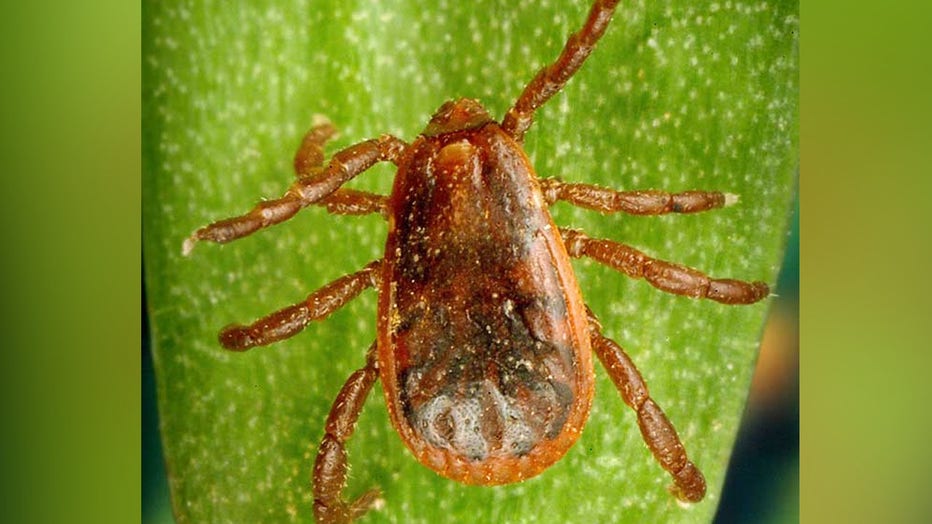Tick bites and lyme disease: How to recognize them and tips to prevent

Understanding and preventing tick bites
Dermatologist Dr. Lily Talakoub joins Good Day DC to offer advice and insight on how to prevent tick bites this summer and what to do if you do get bit by one.
WASHINGTON - The summer months are prime season for tick bites and the Lyme disease they can carry.
Board-certified dermatologist Dr. Lily Talakoub, founder of McLean Dermatology and Skincare Center, joined us with ways to recognize ticks and their bites and with ways to prevent them from happening.

Brown Dog Tick (Photo: CDC / Rhipicephalus sanguineus / Photo of an adult male brown dog tick, Rhipicephalus sanguineus, on a blade of grass.)
Preventing Tick Bites from the Centers for Disease Control and Prevention:
BEFORE YOU GO OUTDOORS
- Know where to expect ticks.
- Treat clothing and gear with products containing 0.5% permethrin.
- Use Environmental Protection Agency (EPA)-registered insect repellentsexternal icon containing DEET, picaridin, IR3535, Oil of Lemon Eucalyptus (OLE), para-menthane-diol (PMD), or 2-undecanone.
-Avoid contact with ticks
AFTER YOU COME INDOORS
- Check your clothing for ticks and remove them
- Carefully examine gear and pets
- Conduct a full body check upon return from potentially tick-infested areas focusing on these prts of the body:
- Under the arms
- In and around the ears
- Inside belly button
- Back of the knees
- In and around the hair
- Between the legs
- Around the waist
HOW TO REMOVE A TICK
- Use clean, fine-tipped tweezers to grasp the tick as close to the skin’s surface as possible.
- Pull upward with steady, even pressure. Don’t twist or jerk the tick; this can cause the mouth-parts to break off and remain in the skin. If this happens, remove the mouth-parts with tweezers. If you cannot remove the mouth easily with tweezers, leave it alone and let the skin heal.
- After removing the tick, thoroughly clean the bite area and your hands with rubbing alcohol or soap and water.
- Never crush a tick with your fingers. Dispose of a live tick by:
- Putting it in alcohol,
- Placing it in a sealed bag/container,
- Wrapping it tightly in tape, or
- Flushing it down the toilet.
SYMPTOMS OF TICKBORNE ILLNESS
Many tickborne diseases can have similar signs and symptoms. If you get a tick bite and develop the symptoms below within a few weeks, see your healthcare provider.
The most common symptoms of tick-related illnesses include:
- Fever/chills. All tickborne diseases can cause fever.
- Aches and pains. Tickborne diseases can cause headache, fatigue, and muscle aches. People with Lyme disease may also have joint pain.
- Rash. Lyme disease, Southern tick-associated rash illness (STARI), Rocky Mountain spotted fever (RMSF), ehrlichiosis, and tularemia can cause distinctive rashes.

